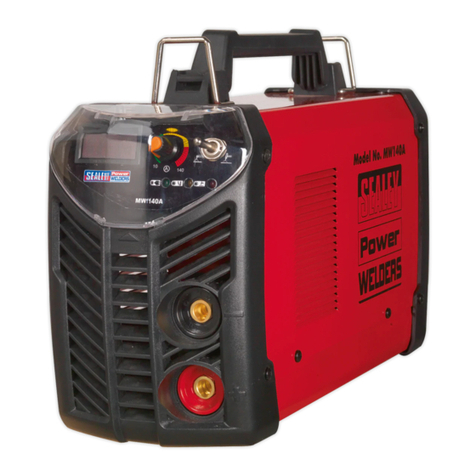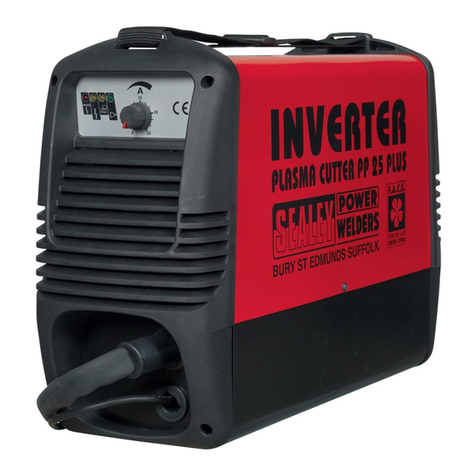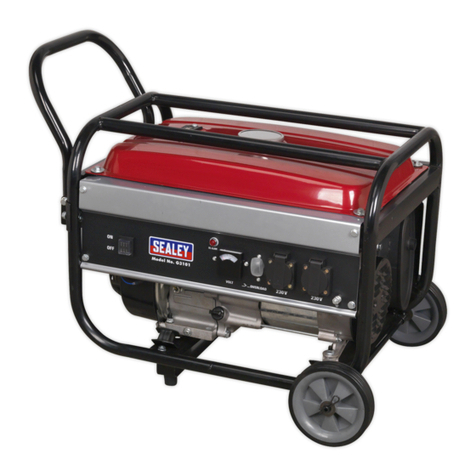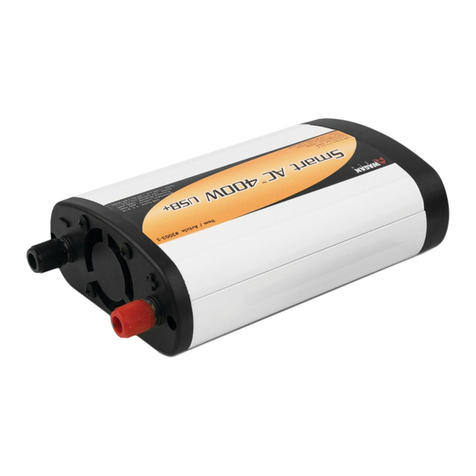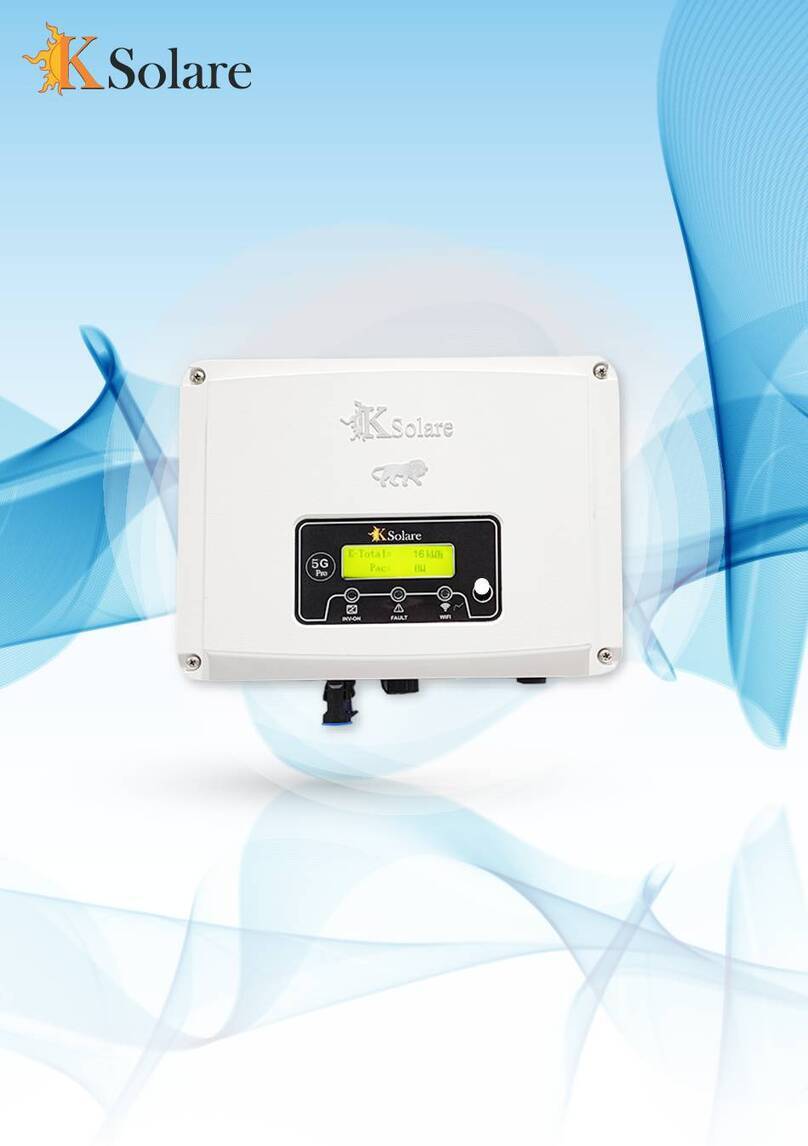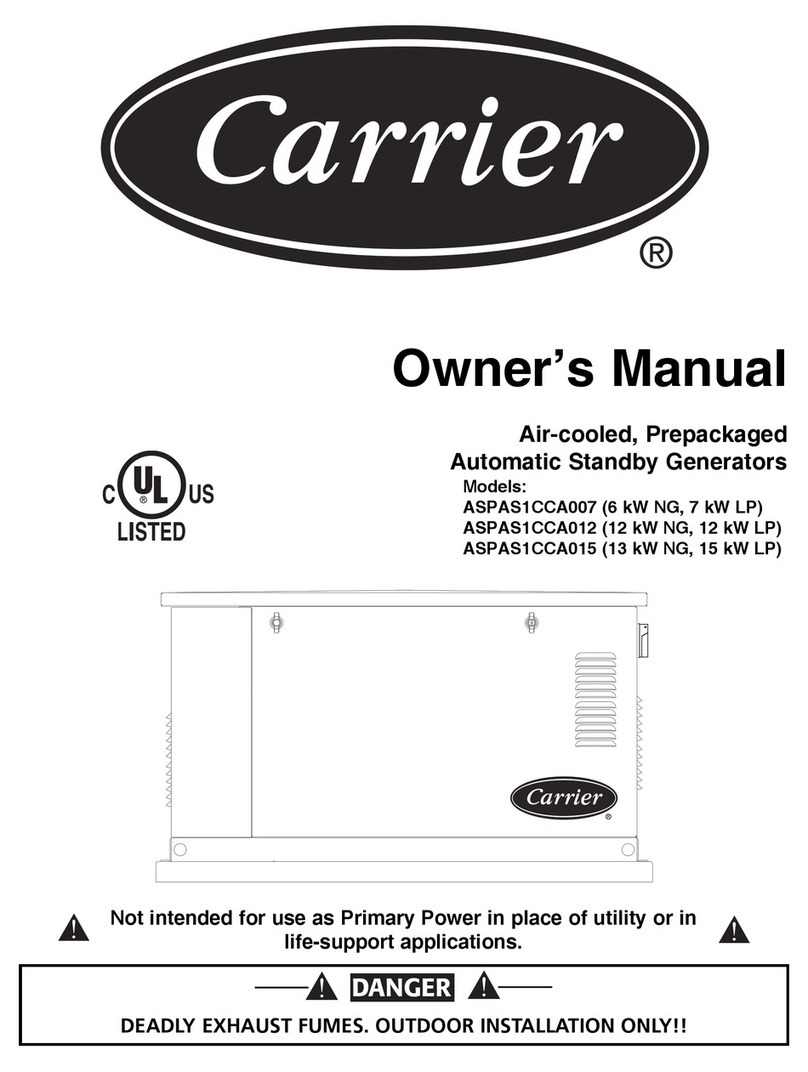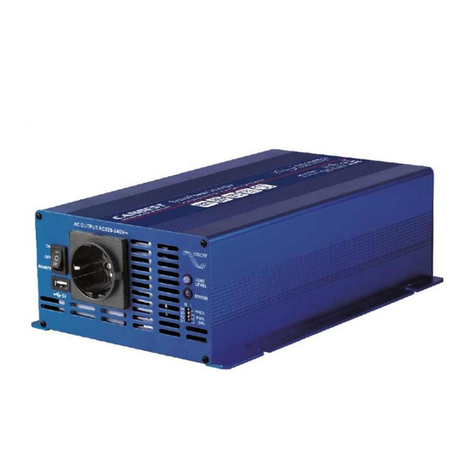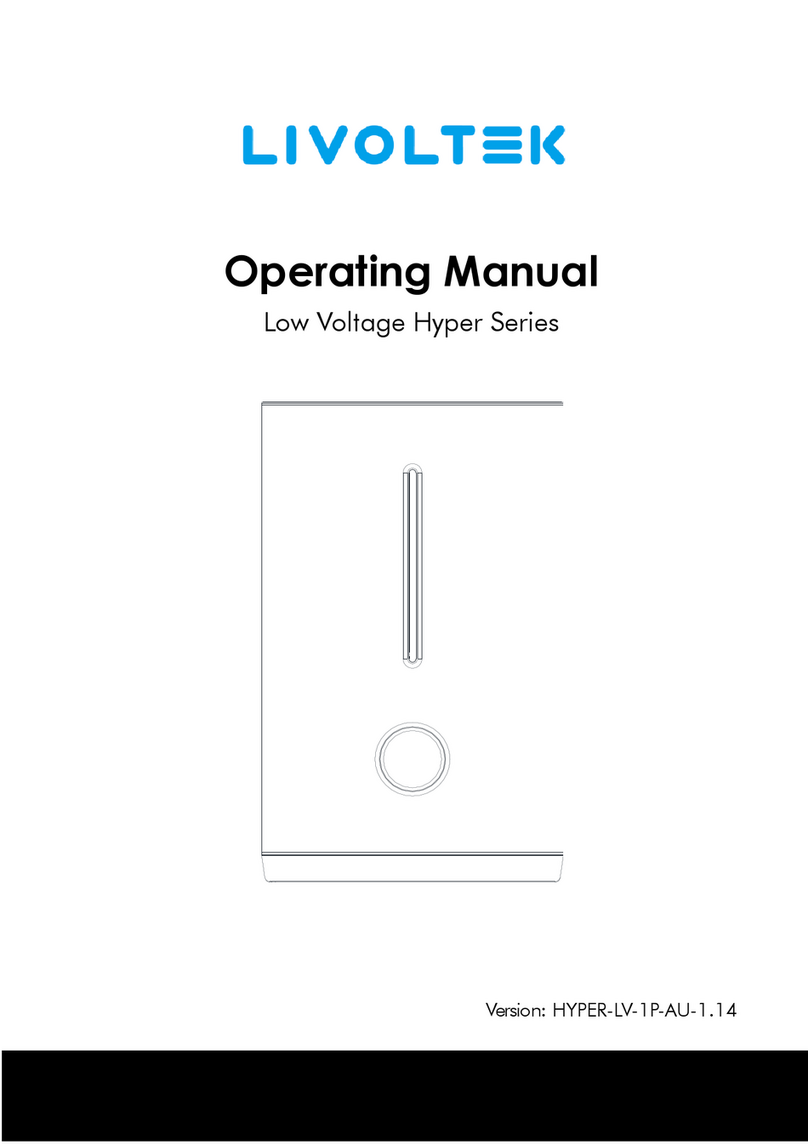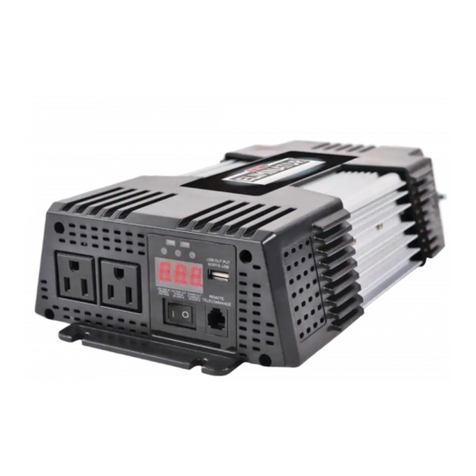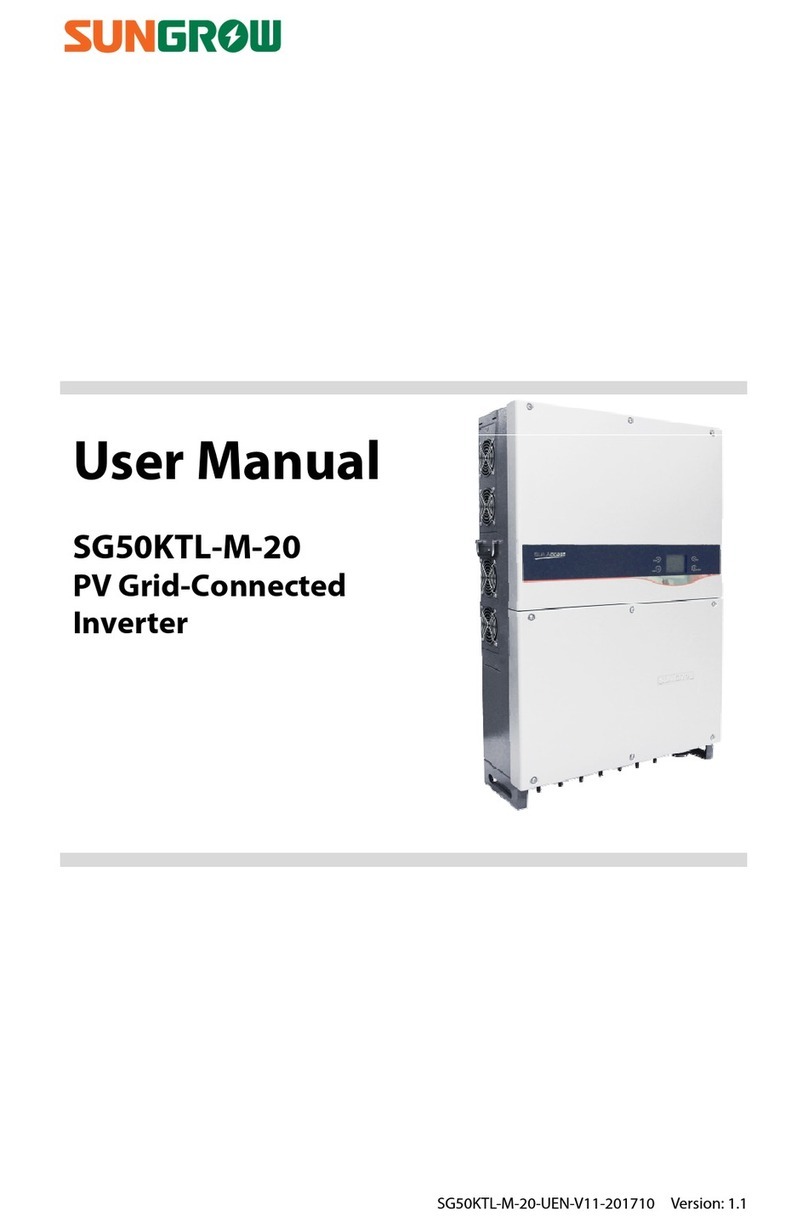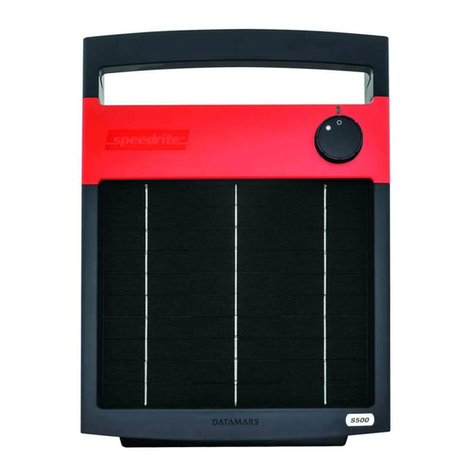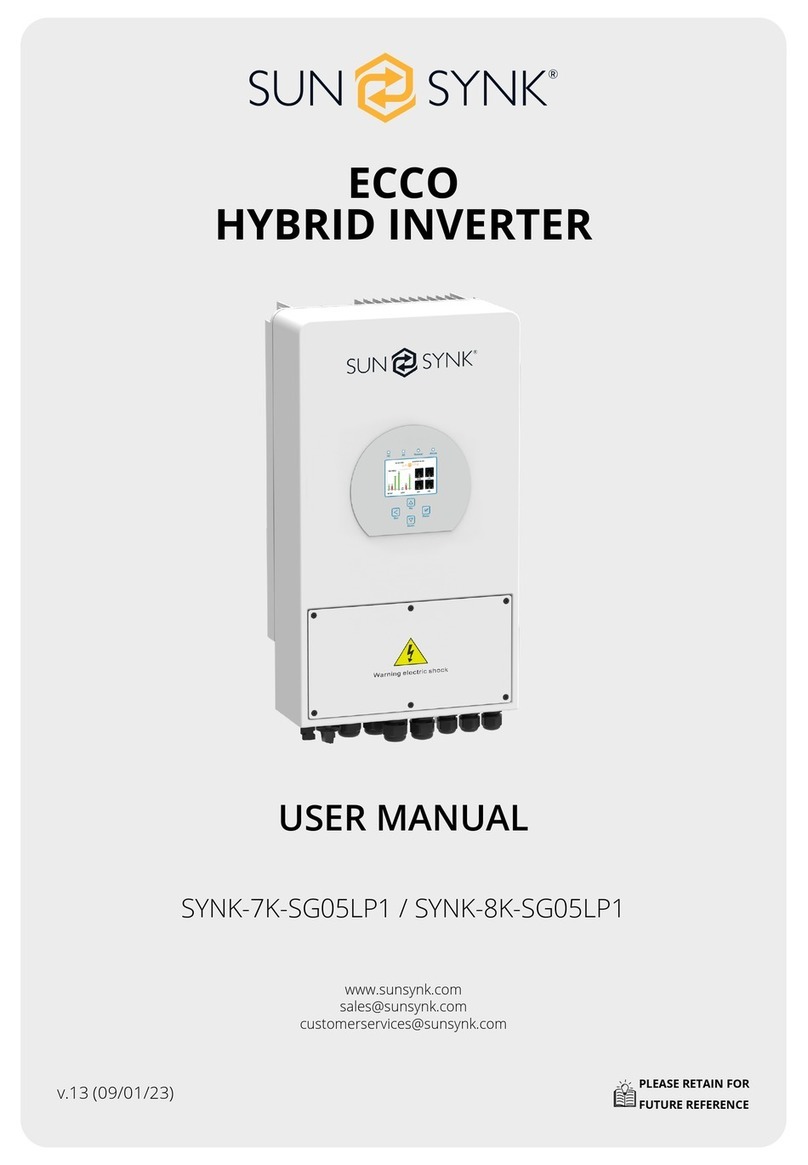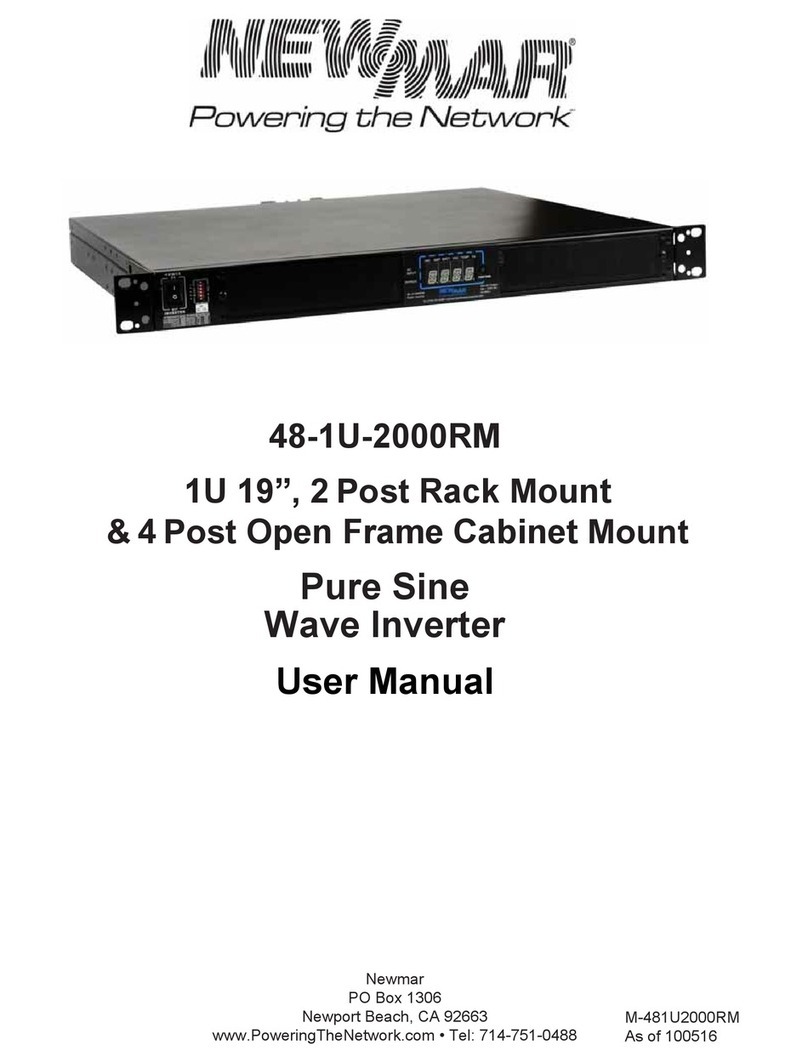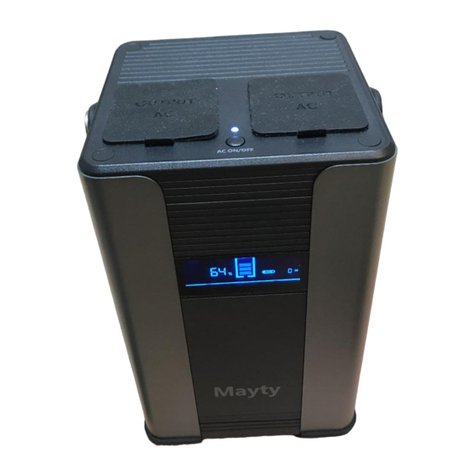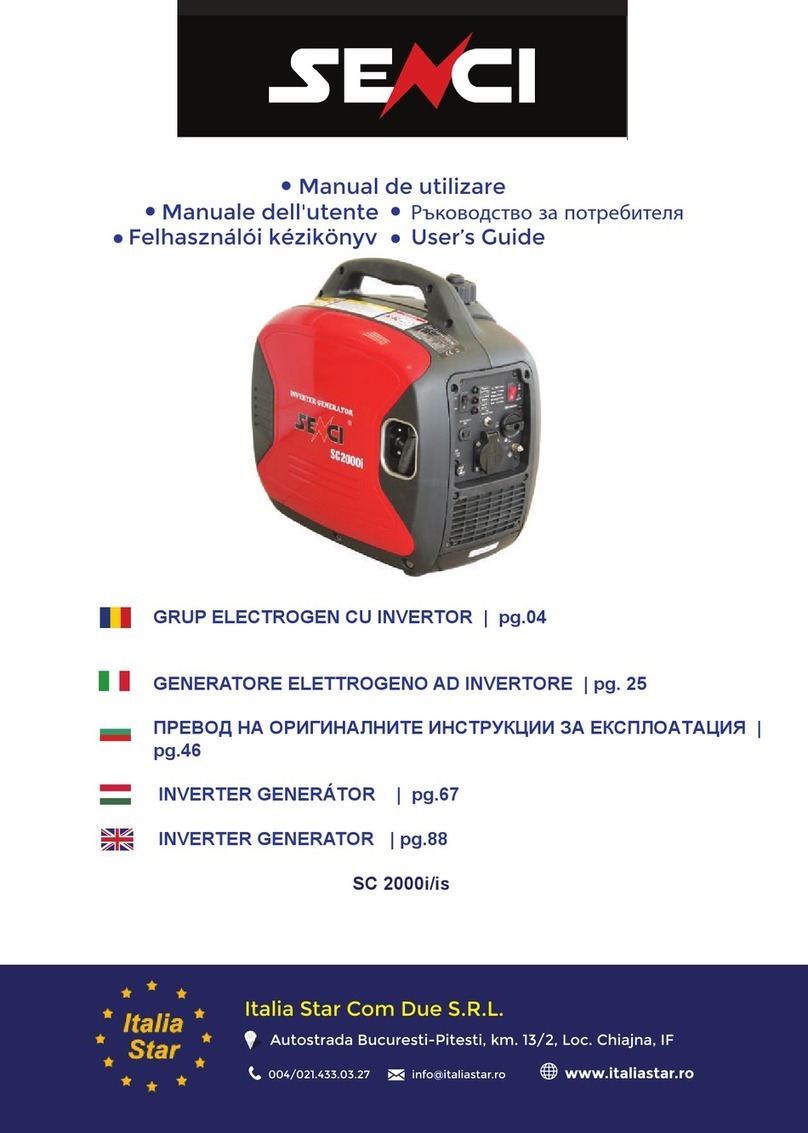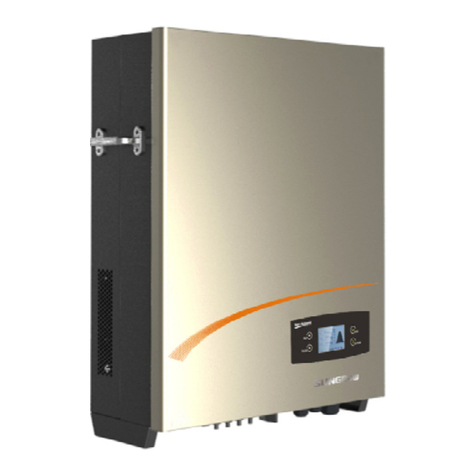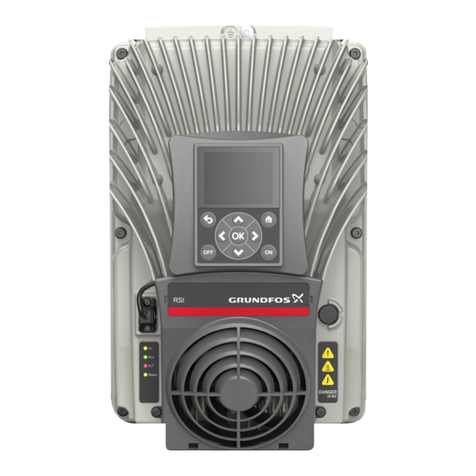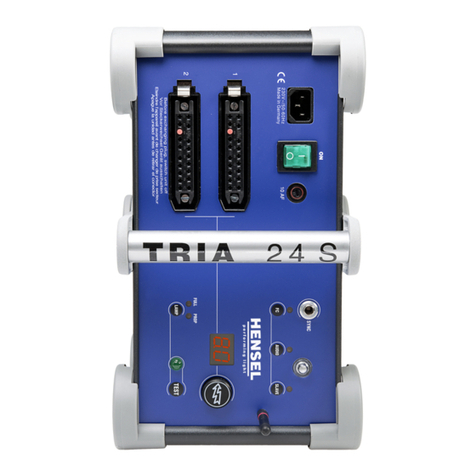Sealey PI700.V3 User manual

INSTRUCTIONS FOR
POWER INVERTER 700W 12V DC-230V 50HZ
MODEL NO: PI700.V3
Thank you for purchasing a Sealey product. Manufactured to a high standard, this product will, if used according to these
instructions, and properly maintained, give you years of trouble free performance.
IMPORTANT: PLEASE READ THESE INSTRUCTIONS CAREFULLY. NOTE THE SAFE OPERATIONAL REQUIREMENTS, WARNINGS & CAUTIONS. USE
THE PRODUCT CORRECTLY AND WITH CARE FOR THE PURPOSE FOR WHICH IT IS INTENDED. FAILURE TO DO SO MAY CAUSE DAMAGE AND/OR
PERSONAL INJURY AND WILL INVALIDATE THE WARRANTY. KEEP THESE INSTRUCTIONS SAFE FOR FUTURE USE.
1. SAFETY
▲DANGER! - Beware, lead-acid batteries generate explosive gases during normal battery operation.
9Wash immediately with soap and water if battery acid contacts skin or clothing. If acid enters eye, flush immediately with cool
clean running water for at least 15 minutes and seek immediate medical attention.
8DO NOT smoke or allow a spark or flame in the vicinity of the battery or engine.
9If the battery terminals are corroded or dirty, clean them before attaching the clips.
WARNING! To prevent the risk of sparking, short circuit and possible explosion DO NOT drop metal tools in the battery area, or allow
them to touch the battery terminals.
9Before attaching to battery, remove personal metallic items such as rings, bracelets, necklaces and watches. A lead acid
battery can produce a short-circuit current which is high enough to weld such items to the vehicle and cause severe burns.
9Keep children and unauthorised persons away from the working area.
WARNING! DO NOT use on any vehicles other than those with 12Volt DC systems.
WARNING! For delicate items such as laptops, an anti-surge device is recommended.
8DO NOT connect to any AC power source.
8DO NOT connect to any AC power source.
8DO NOT get inverter wet or use in damp or wet locations or areas where there is condensation.
8DO NOT use the inverter for any purpose other than for which it is designed.
8DO NOT pull the cables or clips from the battery terminals.
8DO NOT operate the inverter if damaged.
8DO NOT connect to a positive earthed system. Ensure you have the polarity correct before connecting, red clip to positive (+)
battery terminal and black clip to negative (-) battery terminal.
9Before connecting ensure nothing is plugged into the inverter, and the inverter is switched OFF.
WARNING! Inverters become hot during use.
9When not in use store inverter in a safe, dry, childproof location.
2. INTRODUCTION
Supplies continuous smooth 230V power from 12V DC power supply found in cars, caravans, boats and HGVs. Suitable for powering small TVs,
laptops, power tools and various other electrical equipment within the wattage rating of the inverter. Features USB port for use on various domestic
electrical equipment such as digital cameras and mobile phones. Anodized aluminium case provides durability and maximum heat dissipation.
Safety features include automatic overload shut-down and a low battery alarm to prevent damage to the supply battery. Supplied with battery clips.
Refer to
Instruction
Manual
Wear Eye
Protection
Wear
Protective
Gloves
Warning:
Explosive
Risk
Warning:
Electricity
PI700.V3 | Issue 1 18/04/16
Original Language Version
© Jack Sealey Limited

3. SPECIFICATIONS
Model No................................................................. PI700.V3
Input Voltage ..............................................................12V DC
Output Voltage ......................................................... 230V AC
Continuous Output ........................................................700W
Maximum Output.........................................................1400W
Output Frequency ..........................................................50Hz
Dimensions (WxDxH)....................................245x105x60mm
Supply Connections ...........................Battery Terminal Leads
4. SETUP & OPERATION
4.1. Power Source Requirements.
4.1.1. The inverter must be connected to a 12V DC negative earth system. DO NOT use with a positive earth system.
4.2. The power source must be capable of providing between 10.0V and 15.5V and able to supply the necessary current
to operate the load.
4.3. Connecting Battery Leads to Inverter.
4.3.1. To attach the Battery Leads remove the terminal caps (fig.1.1) and washers (fig.1.3) on the rear of the inverter. Attach cable
between the terminal bases (fig.1.2) and the washers (fig.1.3) Refit terminal caps.
4.3.2. Check that the battery leads are secure.
4.4. Connecting to Battery Terminals
4.4.1. NOTE! Check the battery is 12VDC. DO NOT use with a 6V or 24V battery
4.4.2. Ensure battery terminals are clean, if necessary clean away any corrosion.
4.4.3. Check to make sure the inverter is turned OFF and no flammable fumes are present.
4.4.4. Fit the red (+) battery lead to the red (+) terminal post on the battery.
4.4.5. Fit the black (-) battery lead to the black (-) terminal post on the battery.
4.4.6. Check all connections are secure.
4.5. Connection to Load.
4.5.1. NOTE! Most electrical appliances, tools etc, have a rating plate indicating the power consumption in Amps or Watts. Use
these ratings to ensure you remain within the inverters maximum capacity. If the rating is shown in Amps, multiply
the value by the voltage (230V) to determine the wattage.
4.5.2. Ensure that the inverter is switched OFF. Plug the equipment you wish to use into the inverter 3 pin socket or into the USB
port as required.
4.5.3. Make sure the load does not exceed the wattage rating of the inverter.
4.5.4. Switch the inverter on, check that everything is working and the green LED is lit.
WARNING! DO NOT connect the inverter to any AC distribution wiring or any AC load circuit in which the neutral conductor
is connected to ground (earth) or to the negative of the DC (battery) source.
4.5.5. NOTE! Some rechargeable devices do not operate well with a moderated sine wave inverter. They only operate from a
standard household outlet which provides a pure sine wave. It is recommended that these devices be operated from a standard
household outlet only. This problem does not occur with most battery operated equipment. Most of these devices use a separate charger
or transformer that is plugged into a separate AC socket.
4.6. Placement of Inverter.
4.6.1. For best and safest operation the inverter should be placed on a flat and stable surface.
4.6.2. Use only in a dry location, do not allow inverter to get wet.
4.6.3. Use in cool ambient temperature of between 0°C and 40°C. Do not place on or near a heating vent.
4.6.4. Allow sufficient space around the inverter for cooling. If the inverter overheats it will shut down and will not restart until it
has cooled down.
8DO NOT use near flammable materials or anywhere that flammable gasses could accumulate.
4.6.5. The inverter may become uncomfortably hot during extended periods of full power use.
WARNING! DO NOT place on or near materials that may be affected by heat.
PI700.V3 | Issue 1 18/04/16
Original Language Version
© Jack Sealey Limited
fig.1

5. OPERATING TIPS
5.1. Wattage Loading.
5.1.1. Inductive loads, such as TV’s and stereos, require more current to operate than do resistive loads of the same wattage rating
Induction motors, as well as some televisions, may require 2 to 6 times their wattage rating to start up. The most demanding in this
categoryarethosethatstartunderload,suchascompressorsandpumps.Testingistheonlydenitivewaytodeterminewhether
aspecicloadcanbestartedandhowlongitcanrun.Theunitwillsimplyshutdownifitisoverloaded.Torestarttheunitaftera
shut down due to overloading, remove the overload.
NOTE! The inverter will not operate high wattage appliances or equipment that produce heat, such as hair dryers, microwave
ovens and toasters.
5.2. Battery Operating Time.
5.2.1. With a typical vehicle battery, a minimum operating time of 1 to 2 hours can be expected depending on the load draw. It is
recommended that the operator starts the engine every hour to recharge the battery. This will prevent any unexpected
shut down of the equipment and will ensure that there is always sufficient battery capacity to start the vehicle. The inverter
may be used either with the engine running or turned off. However, the inverter must be switched OFF when starting the vehicle.
5.2.2. The inverter draws less than 1.3 Amperes from the battery when it is not supplying power to a load. In most cases, the
inverter may be left connected to the battery when it is not in use. If the vehicle will not be used for several days,
disconnect the unit from the battery.
6. PROTECTIVE FEATURES
6.1. The inverter monitors the following potentially hazardous conditions:
6.1.1. Low Battery Voltage - This condition is not harmful to the inverter but could damage the power source. An alarm will sound
when input voltage drops to 10.5V. The inverter automatically shuts down when input voltage drops to 10V. When the condition is
corrected, the unit may be restarted.
6.1.2. Short Circuit - Reverse polarity or short circuit of the load will usually result in the opening of the short circuit protection and
blow the 40A fuses. Depending on the severity of the short, the external fuse will blow first, then the internal fuses. Should
the external fuse blow for any reason then the inverter may still function whilst the internal fuses are intact, but at a
reduced capacity. If the internal fuses blow we recommend contacting your local repair agent or Sealeys technical help line
directly on 01284 757505 for guidance.
6.1.3. High Temperature - When the temperature of the internal heat sink reaches 65°C, the solid state temperature sensor will
automatically shut down the unit. Once it is allowed to cool, the unit may be restarted.
7. TROUBLE SHOOTING
Problem Possible Cause Suggested Remedy
Unit will not operate 1. Poor DC contact
2. Battery voltage below 10V.
3. Load draws too much power.
4. Inverter in thermal shutdown.
5. Vehicle battery in poor condition.
6. External fuse blown due to short
circuit.
7. Internal fuses blown due to short
circuit.
1. Check all DC contacts.
2. Recharge or replace battery.
3. Reduce load.
4. Allow inverter to cool.
5. Check / replace battery.
6. Check battery connections and replace
fuse.
7. Contact local repair agent or Sealey
technical help line for guidance.
Low output voltage. Check with voltmeter. Use true RMS voltmeter
Low voltage alarm sounds continuously. 1. Bad connection or wiring.
2. Low battery voltage.
1. Check and tighten all DC connections.
2. Recharge battery without load.
Television Interference 1. Inverter too close to the television. 1. Locate the inverter as far as possible
from the TV,
antenna and other cables.
NOTE: It is our policy to continually improve products and as such we reserve the right to alter data, specications and component parts without prior notice.
IMPORTANT: No liability is accepted for incorrect use of this product.
WARRANTY: Guarantee is 12 months from purchase date, proof of which will be required for any claim.
Sole UK Distributor, Sealey Group.
Kempson Way, Suffolk Business Park,
Bury St. Edmunds, Suffolk.
IP32 7AR
www.sealey.co.uk
sales@sealey.co.uk
01284 757500
01284 703534
Web
Environmental Protection
Recycle unwanted materials instead of disposing of them as waste. All tools, accessories and packaging should be sorted,
taken to a recycling centre and disposed of in a manner which is compatible with the environment.
WEEE Regulations
Dispose of this product at the end of its working life in compliance with the EU Directive on Waste Electrical and Electronic
Equipment (WEEE). When the product is no longer required, it must be disposed of in an environmentally protective way.
Contact your local solid waste authority for recycling information.
PI700.V3 | Issue 1 18/04/16
Original Language Version
© Jack Sealey Limited
Parts support is available for this product. To obtain a parts listing and/or diagram,
please log on to www.sealey.co.uk, email sales@sealey.co.uk or telephone 01284 757500.
Table of contents
Other Sealey Inverter manuals
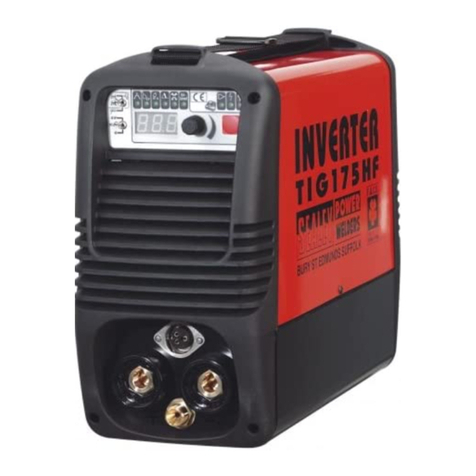
Sealey
Sealey TIG175HF User manual
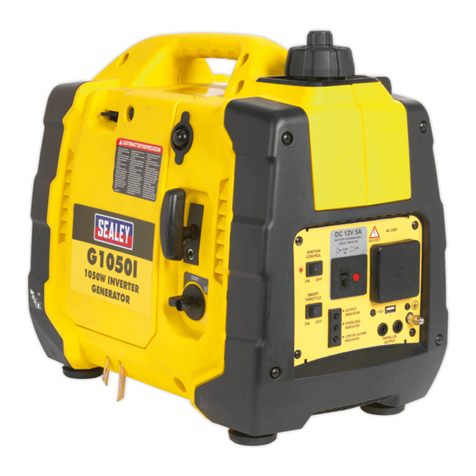
Sealey
Sealey G1050I User manual

Sealey
Sealey MW200i User manual
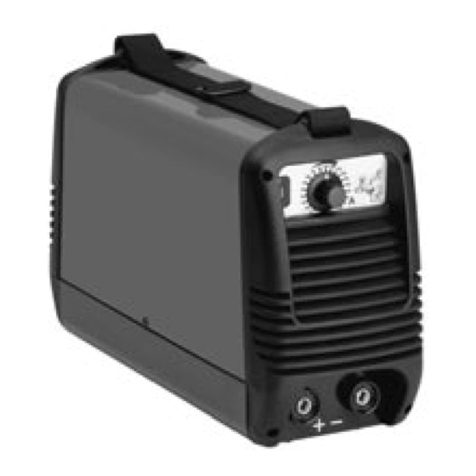
Sealey
Sealey MW140 User manual
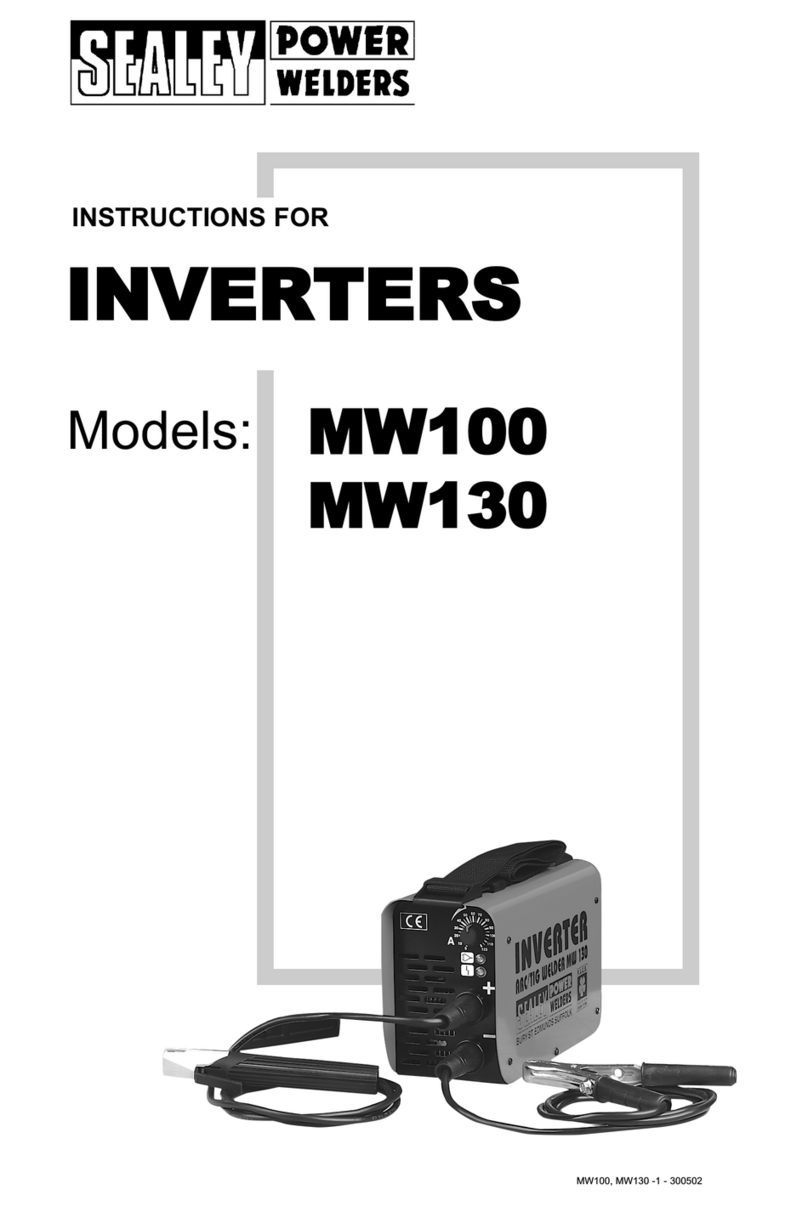
Sealey
Sealey MW100 User manual
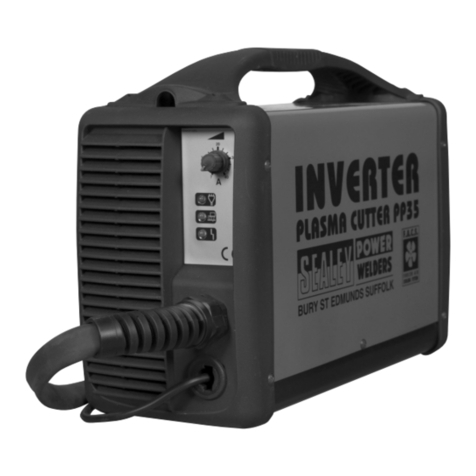
Sealey
Sealey PP35.V2 User manual
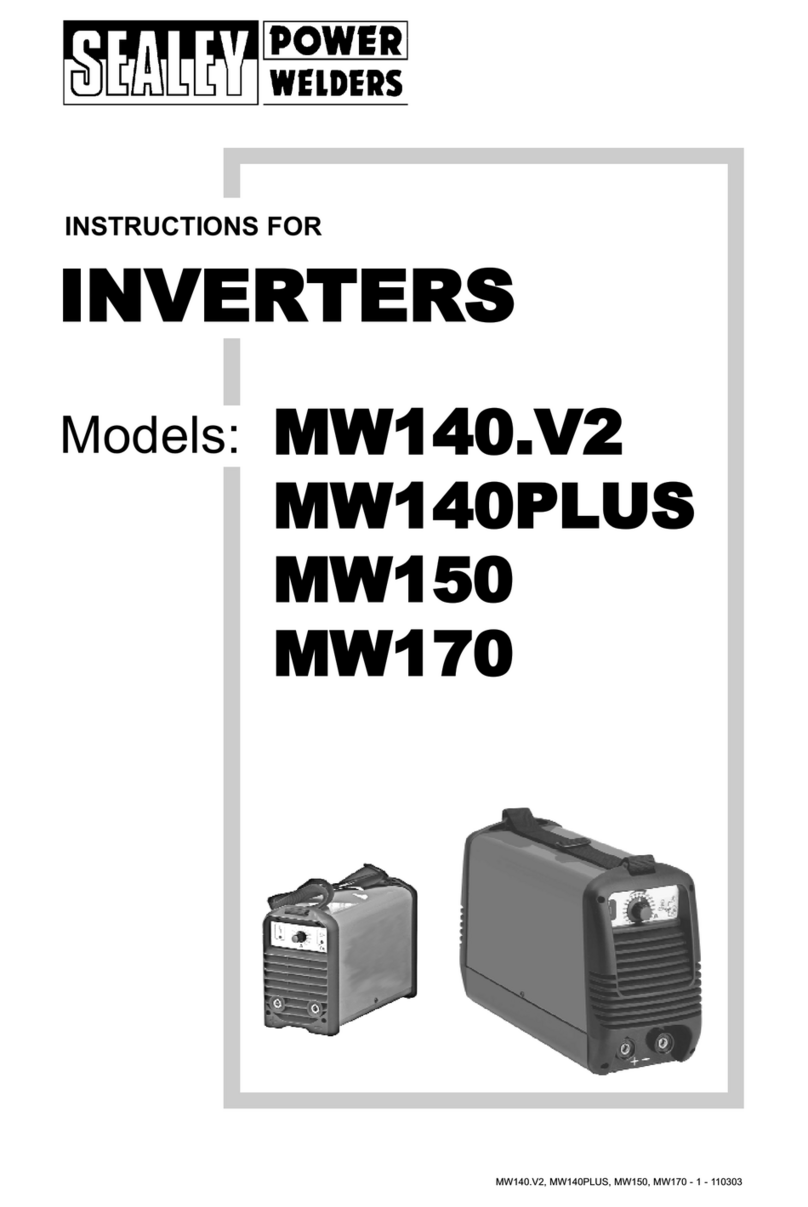
Sealey
Sealey MW140.V2 User manual
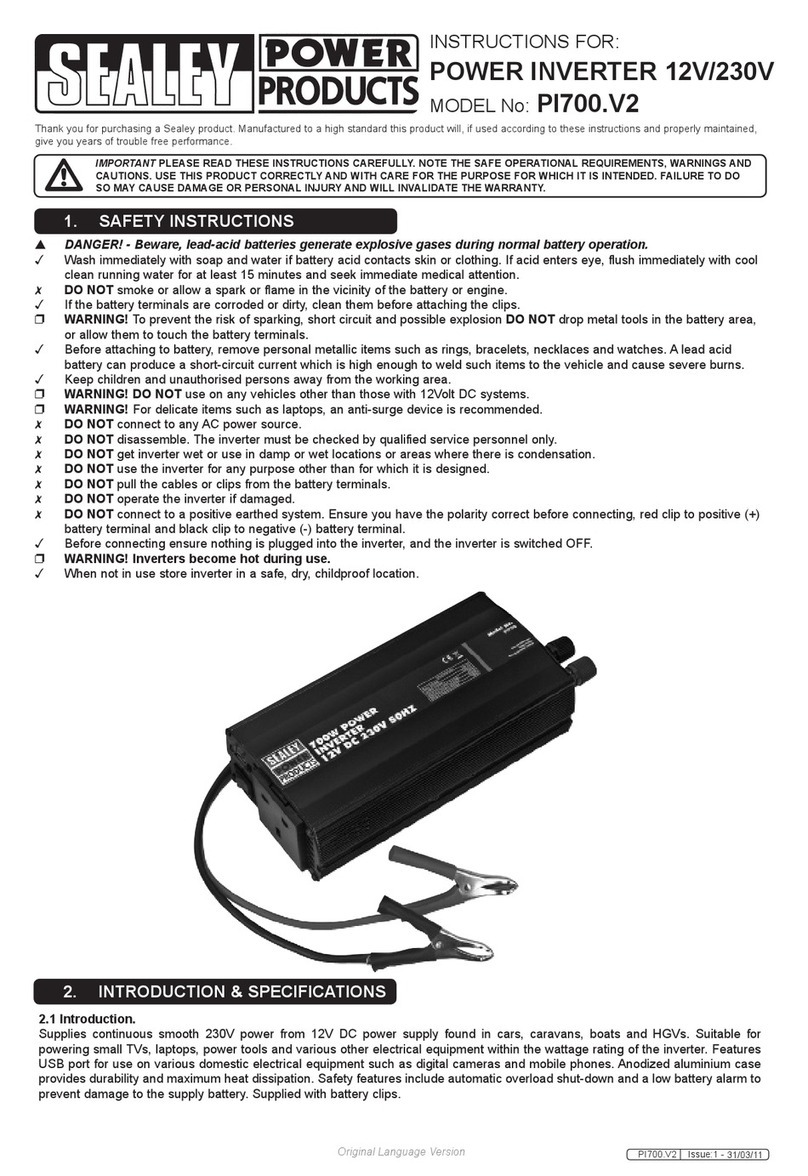
Sealey
Sealey PI700.V2 User manual
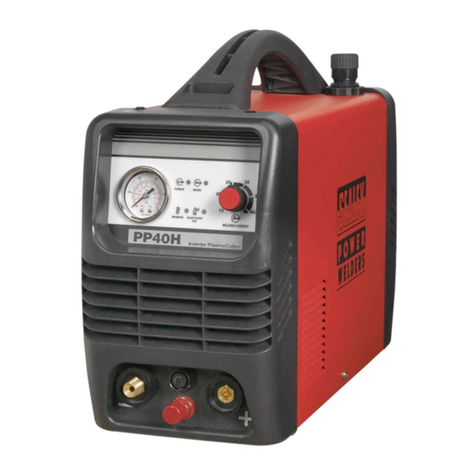
Sealey
Sealey PP40H User manual

Sealey
Sealey TIG160HF User manual
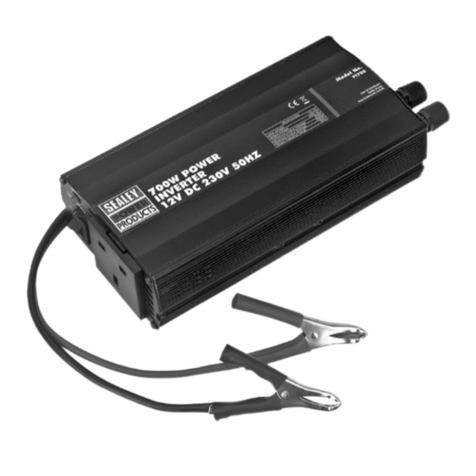
Sealey
Sealey PI700 User manual
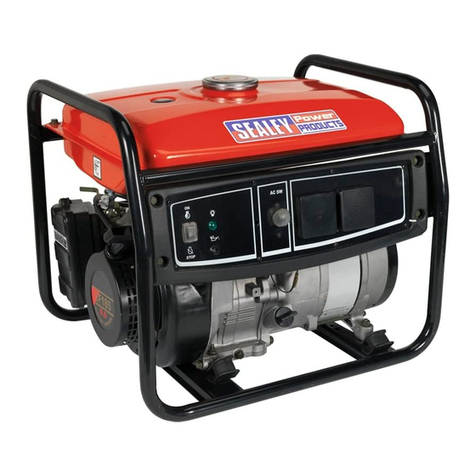
Sealey
Sealey G2300.V2 User manual
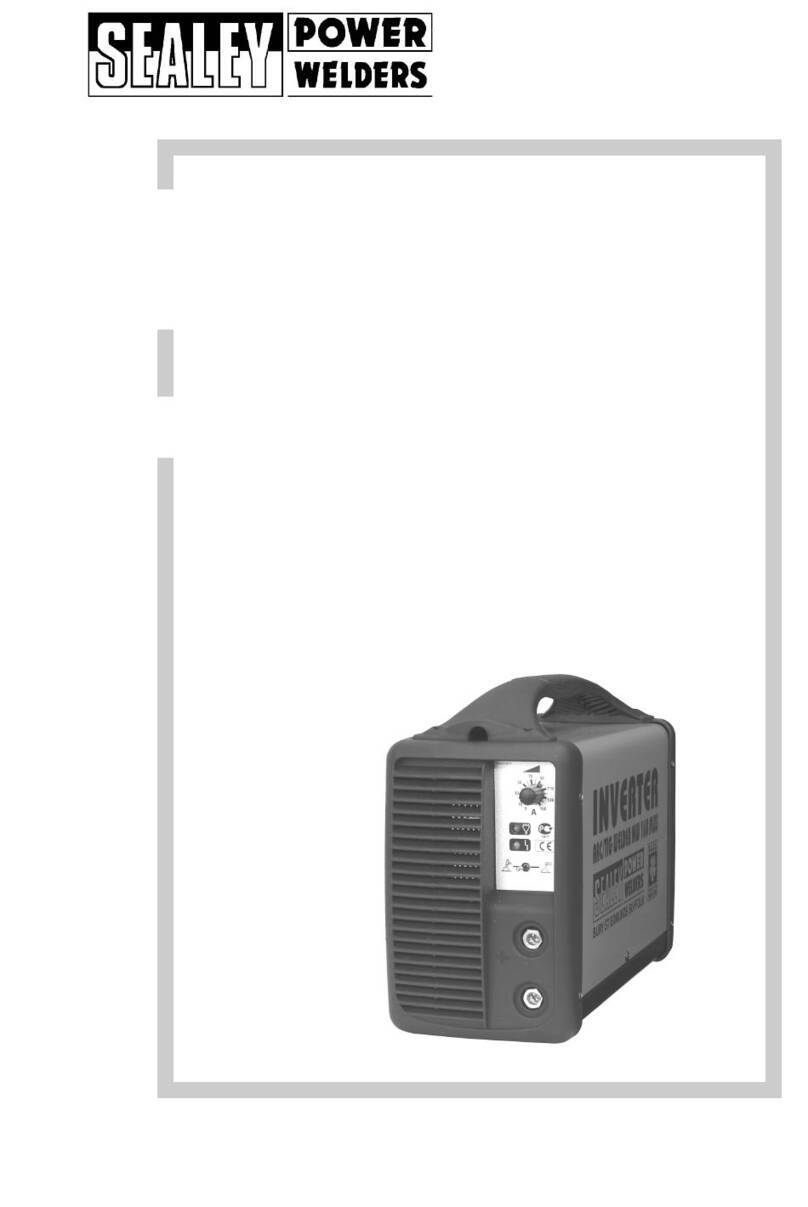
Sealey
Sealey MW140PLUS.V2 User manual
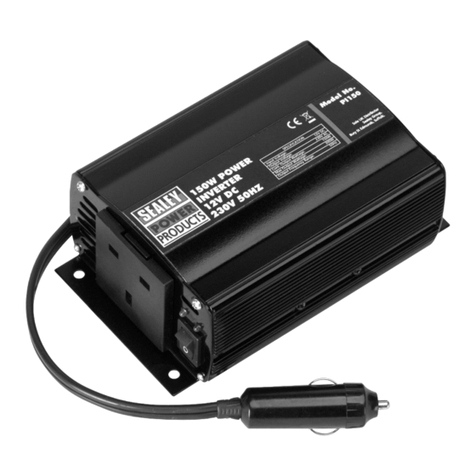
Sealey
Sealey POWER PRODUCTS PI300 User manual
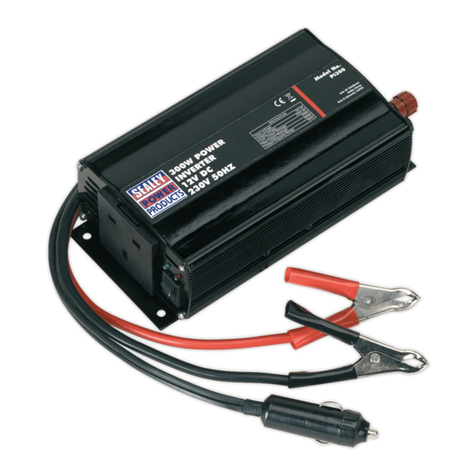
Sealey
Sealey POWER PRODUCTS PI150 User manual
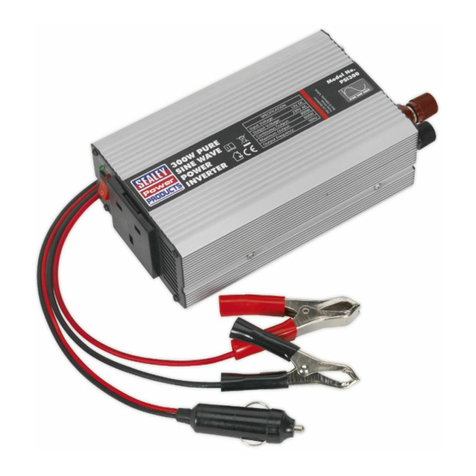
Sealey
Sealey PSI300.V2 User manual
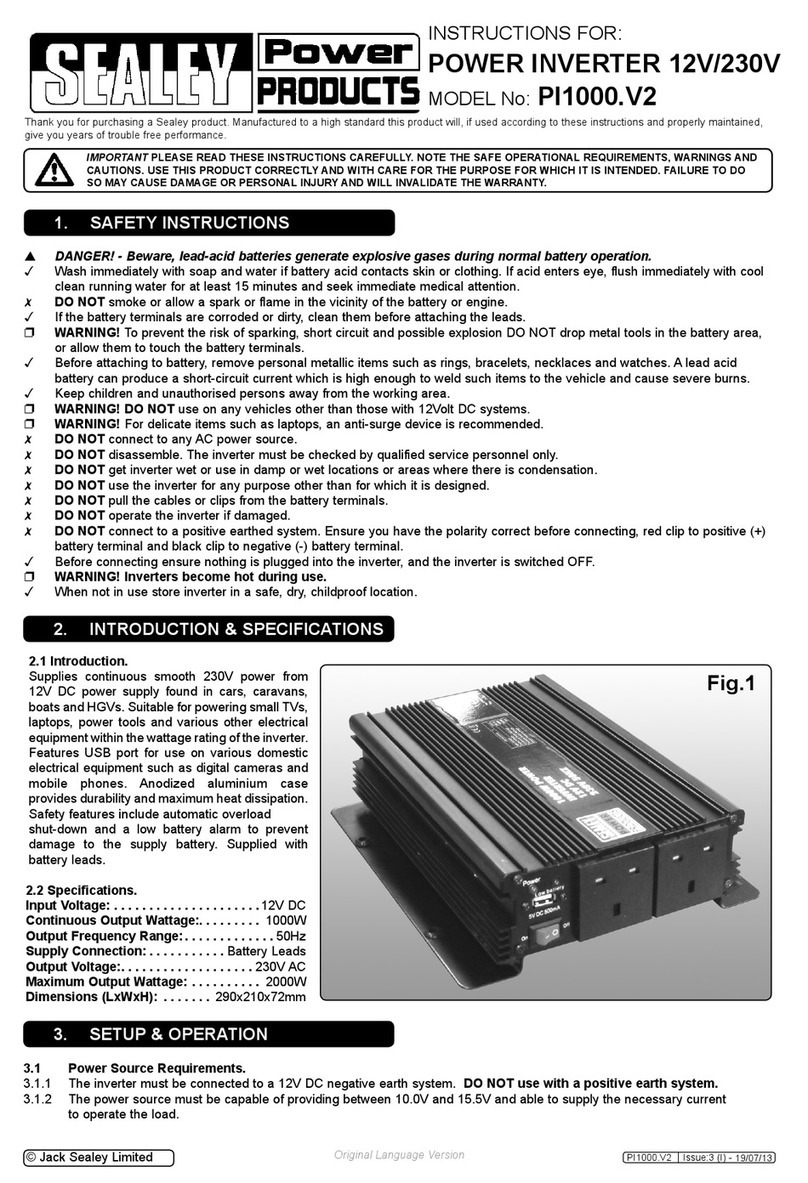
Sealey
Sealey PI1000.V2 User manual

Sealey
Sealey TIG161HFACDC User manual

Sealey
Sealey PI1000.V3 User manual
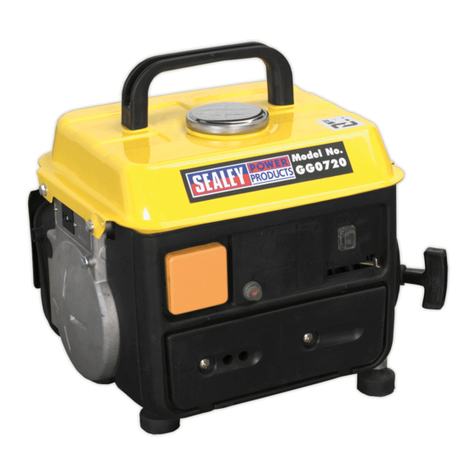
Sealey
Sealey GG0720 User manual
